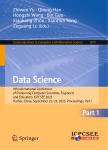Combining Multiple Factors of LightGBM and XGBoost Algorithms to Predict the Morbidity of Double-High Disease
作者机构:College of Computer Science and Technology Jilin University Changchun China College of Software Jilin University Changchun China Information Science and Technology College Northeast Normal University Changchun China
出 版 物:《国际计算机前沿大会会议论文集》 (International Conference of Pioneering Computer Scientists, Engineers and Educators(ICPCSEE))
年 卷 期:2019年第2期
页 面:643-644页
基 金:the National Natural Science Foundation of China (Nos. 61772227,61702214) the Development Project of Jilin Province of China (Nos 20170101006JC, 20170203002GX, 20190201293JC). This work was also supported by Jilin Provincial Key Laboratory of Big Date Intelligent Computing (No. 20180622002JC)
主 题:LightGBM algorithm XGBoost algorithm Double-high biochemical index prediction
摘 要:In recent years, cardiovascular and cerebrovascular diseases have seriously jeopardized people’s health. Double-high (hyperlipidemia and hypertension) is one of the main causes of cardiovascular and cerebrovascular diseases in clinical practice. To diagnose cardiovascular and cerebrovascular diseases early, a reliable prediction system should be developed to assist doctors. In this paper, the different elements and evaluate the weight of these elements on double-high diseases are analyzed by machine learning method. The LightGBM algorithm and XGBoost algorithm were employed to construct the prediction models, respectively. Significantly, the proposed model was trained by real physical examination data and five meaningful and useful biochemical indicators were selected to encoding the raw physical examination data to numerical vector. The selected features are systolic blood pressure, diastolic blood pressure, serum triglyceride, serum high-density lipoprotein and serum low-density lipoprotein. The mean square error (MSE) after calculating the logarithm of the predicted value and the true value was introduced to assess the prediction model. Results show that this model can effectively predict cardiovascular and cerebrovascular diseases in advance.



